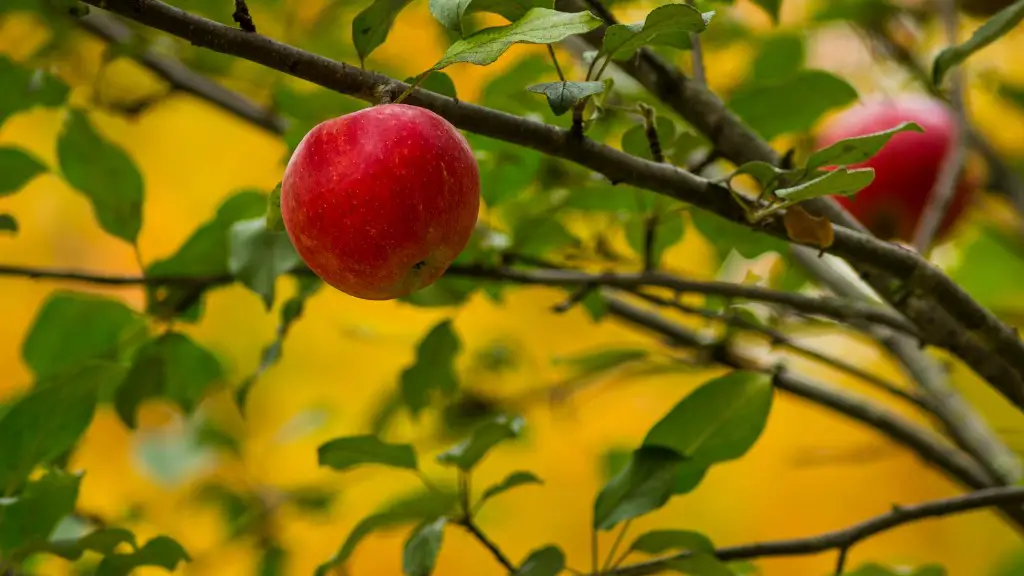What Will Kill Palm Tree Seedlings?
When planting palm trees, you may be eager to watchet them preserve and eventually bearing fruits. Failure to take care of the young plants can lead to their demise. There are several potential causes of death in the seedling stage, the most common of which include incorrect cultivation, lack of water or nutrients, insect infestation and disease. It is important to be aware of the dangers and be able to recognize the symptoms of each and provide adequate care.
Poor Growing Conditions
When planting palms, many cultivators make the mistake of selecting an unfavorable location. During the development of the seedling, the palm must be situated in a sheltered and sunny spot. Exposure to too little or too much light can be detrimental to young plants. Also, ensure they are kept away from frost, wind and excess rainfall. Furthermore, ensuring the soil is rich with humus is essential for the development of healthy root systems.
Inadequate Watering and Nutrients
Regardless of soil fertility, water and nutrient availability are essential for successful seedling establishment. If the soil is dry and nutrient deficient, it may be necessary to fertilize occasionally. Never fertilize young seedlings without consulting an agronomist, as doing so in excess can lead to serious stunting and damage. Similarly, overwatering young plants can cause the roots to rot, as can waterlogging, therefore avoiding fluctuating soil moisture levels is also important.
Insect Pests and Disease
Insects and pests can attack young seedlings, the most common of which includes mealybugs, aphids and scale insects. They are most attracted to tender, new growth and can feed on the phloem and other tissues, resulting in ‘honeydew’ deposits, stunting and in extreme cases, death. Diseases that affect palms may not be visible by the naked eye. As such, thorough resistant studies are recommended. Some of the most common palm diseases include Ganoderma butt rot, Fusarium wilt and Lethal Yellowing.
Recognizing Symptoms
Whilst recognizing the symptoms of each threat can help prevent seedling death, early detection is crucial. With inadequate water or nutrients, palms will appear smaller than normal or in wilting conditions. Poor soil as a cause of death can be confirmed by visually inspecting the roots and soil. Insect pests are easier to spot and will appear as white dots, whilst diseases such as ganoderma butt rot or fusarium wilt can be determined by checking for brown spots on foliage or fruit.
Preventing Young Seedlings From Death
Preventing death in palm seedling is a done by creating favorable growing conditions prior to planting. Selecting an open site which receives plenty of light and shelter is critical, especially if sowing in cold climates. To ensure a healthy root system, high-quality humus-rich soils should always be chosen. Similarly, adequate water should be available in the initial stages by ensuring high soil moisture levels, and fertilization can occur as deemed necessary.
Treating Injuries and Diseases
If the wrong environmental condition are created, symptoms may not appear until the plants reach a certain age. If this is the case, it is crucial to identify the cause and treat it appropriately. In many cases, treating with the correct combination of soil amendment or pesticides can eliminate a disease outbreak or level of infestation. Doing your research on the threats and treatments is important or alternatively, asking a professional horticulturist.
Controlling Existing Dangers
The best way to avoid any damage to young seedlings is to practice preventative disease and pest control. This can be done either chemical or alternatively, the use of chemical-free treatments such as the introducing beneficial insects. Pruning diseased areas and ensuring your palms are adequately watered and fertilized can also help. However, always refer to the instructions in order to ensure you do not cause more harm than good.
Monitoring Seedlings’ Overall Health
Be vigilant and keep a close eye on young and developing palms. If certain conditions are recognised, then annual checkups can be scheduled, often accompanied by soil and leaf sample testing. In some cases, chemical testing may be necessary to correctly identify various disease or pest threats. Regular monitoring can help upscale the palms’ overall health by ensuring any issues are tackled in a timely manner.
Applying the Right Protection
When caring for palm tree seedlings, the key is to guarantee their protection. This can be done through the use of proper plant covers, anti-insect nets, or spraying the palms with protective mixtures. Common pests and diseases can literally ruin or worse, kill a young palm. Through monitoring, appropriate correction and cleaning with the right protection, you can guarantee the likelihood of a healthy seedling.
Protecting Against Unfavorable Weather Conditions
It is not just the invaders that can cause problems to young palms: unfavorable weather conditions can too. Cold and frosty climates can be too harsh, causing the roots and leaves to become damaged and brittle. To combat unfavorable temperatures, opt for suitable planting and frost protection techniques such as using overhead covers, raised beds and mulch. This will provide the seedling with the best chance to become vigorous.
Disease-resistant Varieties
There is an array of palm varieties available, each of which is bred for its rare resistance to disease and insect infestations. Researching more about the species, and obtaining information regarding growth rates, fertilizer requirements and damage potential will help to make an informed and suitable palm tree choice. Specific pest and disease-resistant dwarf palms are also available which are ideal for low-maintenance planting.
Educating Yourselves
Palms are a beautiful addition to any green space, however, they require a good deal of care. If not provided with the correct levels of water, fertilizers and protection from unfavorable conditions, then the seedlings are likely to perish. As such, educating yourself on the basics of palm cultivation is essential to keep young seedlings healthy and strong.



